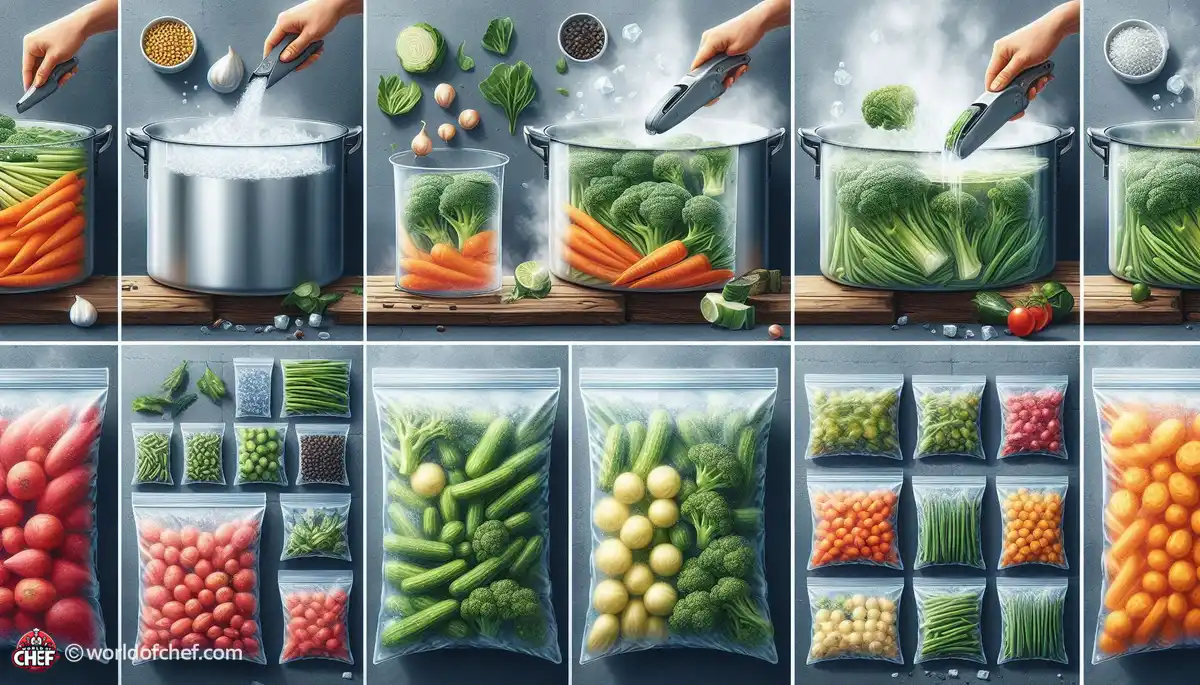
Simmering with Spices: Infusing Flavor into Your Dishes
Emery Donley - Oct 8, 2024 - 8 min read


Blanching is an extremely simple process in maintaining the freshness of your produce. Fundamentally, it is just a quick immersion of fruits or vegetables in boiling water and rapid cooling in ice water. Blanching will stop the activity of certain enzymes that can cause spoilage, maintain color and texture, and remove surface area bacteria.
Blanching is a pre-treatment for freezing. It ensures that your produce will remain good during storage. Deactivating enzymes prevents the loss of flavor, color, and nutrients over time. It also cleans the surface of fruits and vegetables, removing dirt, bacteria, and any residual pesticides.
Generally, there are some general rules to achieve best results. Water should be rolling boiling before the produce is added. A large pot helps prevent overcrowding, which leads to inconsistent blanching. Over-blanching may make the produce taste and textureless. Last but not least, prepare a bowl of ice water to cool down the produce immediately after blanching.
Once blanched, your produce is now ready for the freezer. Pack properly to avoid freezer burn and maintain quality. Use airtight containers or freezer bags, forcing out as much air as possible to avoid oxidation. And do not forget to label every container with the contents and date to maintain proper rotation.
Freezing methods are not the same for fruits and vegetables. For instance, berries and sliced bananas do well when frozen without blanching, while broccoli and green beans prefer blanching before freezing. You should know how each type of produce will work best for you.
Proper blanching and freezing can significantly extend the shelf life of your produce. Most fruits and vegetables can last from 8 months to a year when stored at 0°F (-18°C) or below. Regularly check your freezer for signs of freezer burn or deterioration, and discard any items that show signs of spoilage.
Process your produce in batches to make blanching and freezing easier. You can set aside a time to prepare and blanch several batches, then portion and freeze for later use. This saves you time and also ensures you always have fresh produce ready.
Maximizes the freshness and flavor of using seasonal produce while blanching and freezing. Purchase fruits and vegetables when in season and at their best, and then freeze them through blanching to be able to enjoy them throughout the year. There is nothing like tasting summer during the winter months.
Blanching and freezing will open your world of possibilities in cooking. Try mixed fruit or vegetable combinations in smoothies, soups, stir-fries, and even baked goods. Frozen foods can be just as nutritious and flavorful as fresh, making it a great addition to your arsenal of kitchen tools.
Freezer burn is the process that occurs when moisture evaporates from the surface of frozen food, leaving it dehydrated and oxidized. Proper sealing and storage in sealed containers or freezer bags with minimal air before sealing it can prevent freezer burn.
While blanching does help preserve the color and flavor of produce, some texture changes are expected to occur when freezing. For instance, tomatoes and cucumbers are known to become mushy or watery when thawed. To prevent these effects, frozen produce could be used in cooked preparations rather than raw ones.
For maximum storage space, organize your freezer properly. Use stackable containers or freezer bags to avoid wasting shelf space efficiently. Freezer shelves or baskets can be purchased to have more storage compartments and keep your frozen produce neat and accessible.
Blanching and freezing fresh produce is the simplest and most effective way to extend its storage life and preserve its quality. With an understanding of the principles of blanching, proper freezing techniques, and practical tips for success, you can enjoy the taste of summer year-round. Experiment with different fruits and vegetables, and discover new ways to incorporate frozen produce into your favorite recipes. With a little time and effort, you can stock your freezer with a bounty of fresh, nutritious ingredients ready to enjoy whenever the craving strikes.

Emery Donley - Oct 8, 2024 - 8 min read

Russell Comeaux - Oct 8, 2024 - 8 min read

Walter Backus - Oct 7, 2024 - 8 min read

Samantha Thames - Oct 7, 2024 - 6 min read